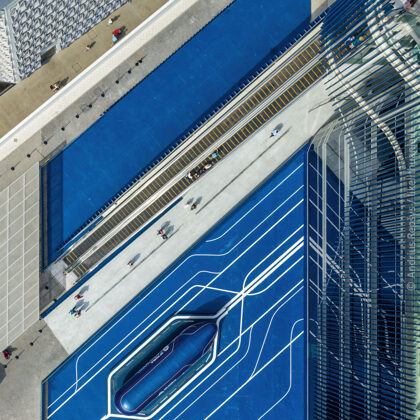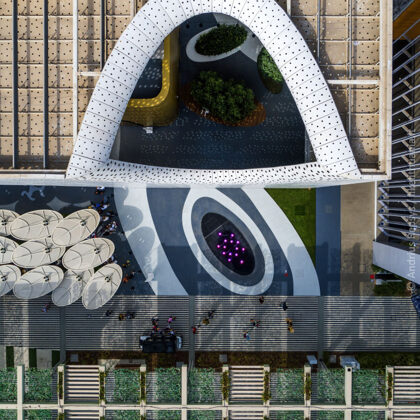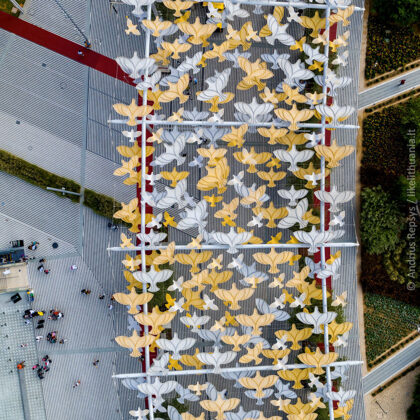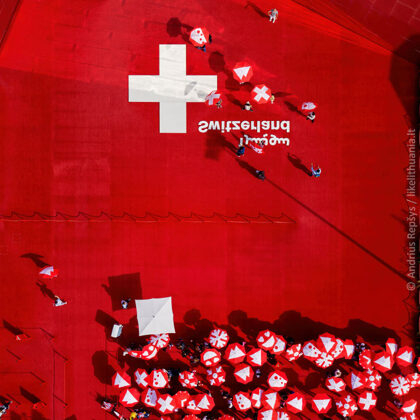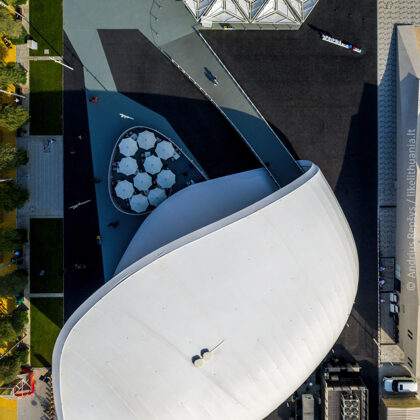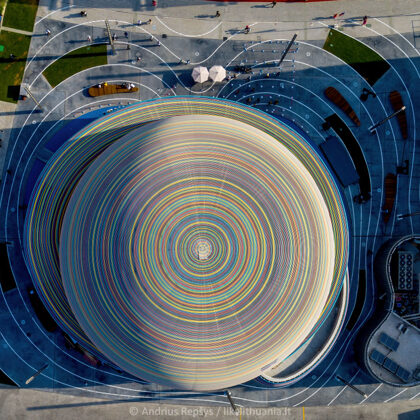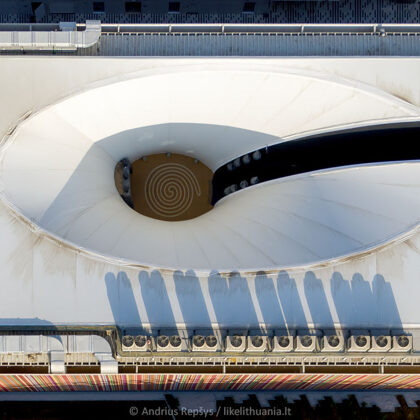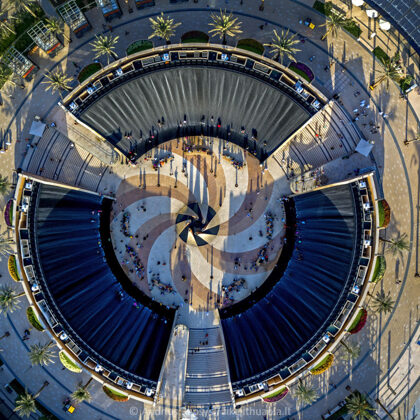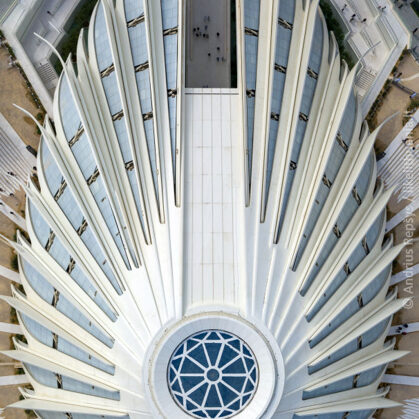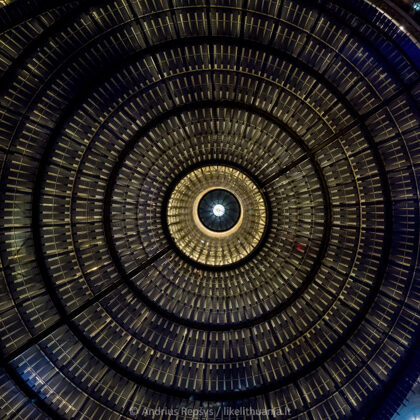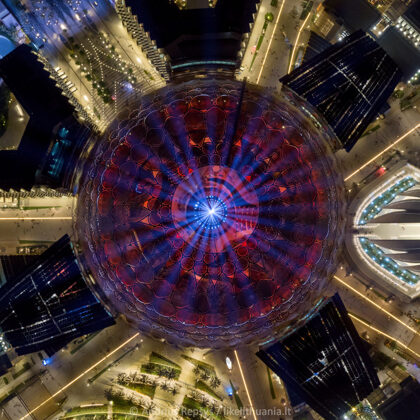Imaginative Journey
Expo2020 exhibition space, Dubai 2022 02 04 - 2022 03 31
Taking us on a journey
What makes aerial photography exceptional and interesting? I think the reasons behind it are similar to what makes us admire the view through a plane window or when we go up to a very high building – our point of view and a whole scale changes, which make objects ordinary to the eye so different. At this moment we are able to grasp what we couldn't before – those naturally and unnaturally formed structures and at the same time to realise insignificance of a human itself. Human as a unit here is not important anymore, he's just an unrecognizable dot in an expanded space, a small detail that practically doesn't change anything. On the other hand, there's an obvious and essential difference between the images that we ourselves discover one way or another and the ones that an artist presents us with. Here, as in other various types of photography, the photographer has already seen and then selected certain compositions and structures. So the work is already done for us. All there is left to do is to reconsider or to create new meanings ourselves.
Now the second question – what makes the photographs that Andrius Repšys selected for us so interesting? The answer is quite broad because the images present us with a lot of possibilities for viewing them. First of all, a lot depends on the type of perspective, point of view we choose. If we look at the works close up, we notice how sunlight falls on the buildings thus creating a new visual layer. Or how various objects interact within themselves – how precise geometrical shapes of Dubai's buildings link to softer and less predictible but at the same time quite controlled nature elements. And if we look at the photographs from further away, we are able to find similarities to op art – especially in the work "Neverending" where the circle looks eternal and neverending.
Another thing that is seen also in a previous Andrius Repšys' photo series Solar graphics is an opportunity to notice surprising objects and structures that are not necessarily connected to the primary image. It's obvious that there is no spoon in a work "Serving" but in front of our eyes we see nothing but a spoon laying in an empty bowl. But the thing that was the most intriguing me is the sacral associations. The first one strikes while looking at the photograph 1 because that's where I find hints of a churche's ribbed vault with a window sticking out – the only thing that's missing is a stained glass. The second one appears in works "Pigeon Blood Ruby" and "Golden fresco". From a first glance there are not much sacredness in them because how sacred can night and its lights really be? However, physical distance is once again responsible for a crucial change – once I am further away from the photograph, I can't stop myself from seeing a chuch vault filled with elaborate frescoes shimmering with gold. And then the birds I see in a piece "Migration" are not just birds anymore – they are doves.
That joy of discovering becomes one of the best parts that the photographs provide us with. Once we interact with the works, we are given a chance to discover the world surrounding us once more – with all its mess and its order. We are able to reevaluate how we see not only our surroundings but ourselves too. In the end, this experience also becomes a journey but not with a help of plane – this time it's with a help of photography.
Paulina Blažytė

